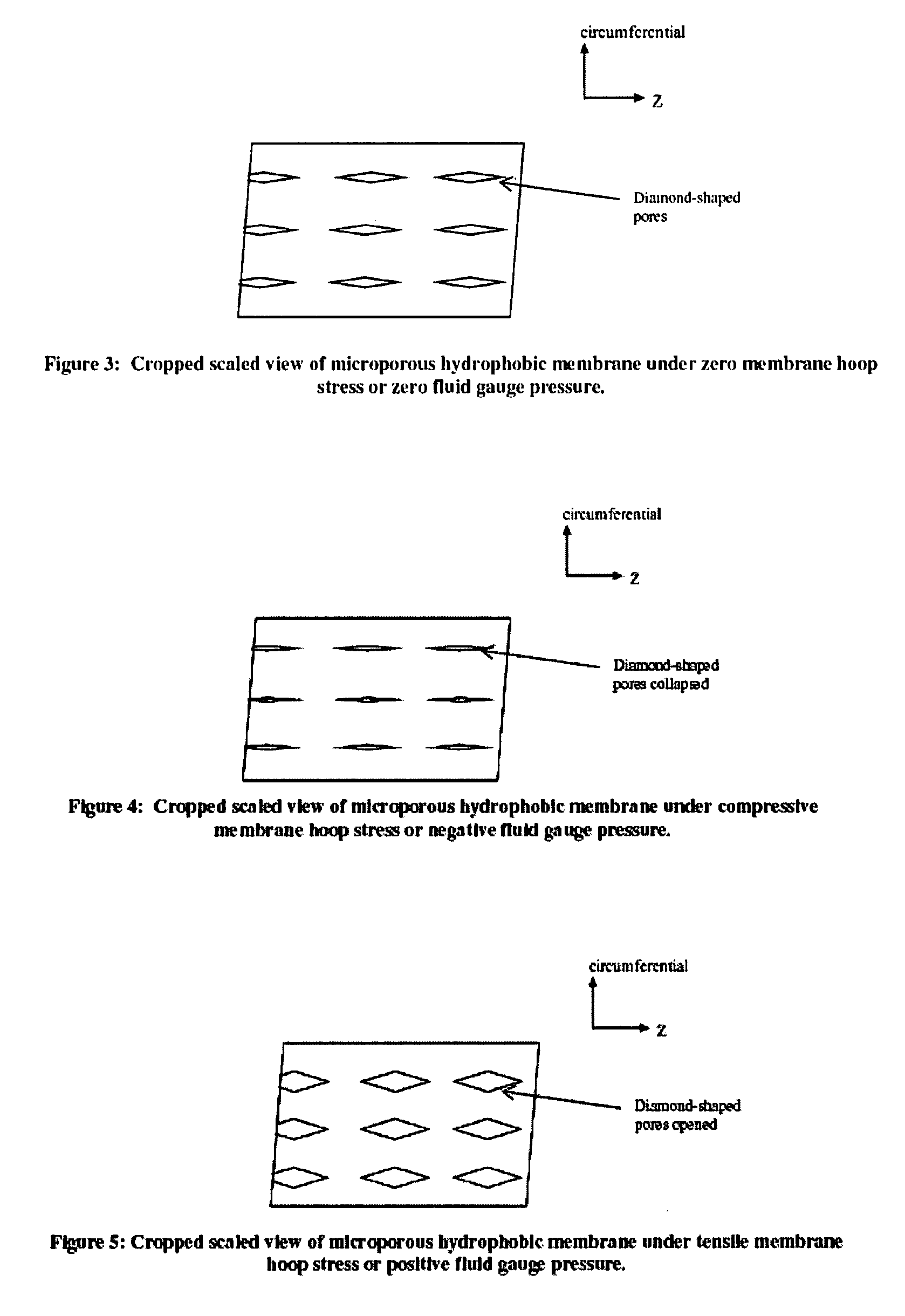Open lumen air filtration for liquid lines
a technology of liquid line and open lumen air, which is applied in the direction of liquid degasification, liquid degasification by filtration, separation process, etc., can solve the problems of bubbles interrupting and/or blocking affecting the flow of fluid, etc., so as to reduce the overall resistance to flow, and reduce the effect of mechanical resistan
- Summary
- Abstract
- Description
- Claims
- Application Information
AI Technical Summary
Benefits of technology
Problems solved by technology
Method used
Image
Examples
Embodiment Construction
[0055]The invention provides devices, systems, methods and kits for removing accumulated gas bubbles in a liquid-carrying line.
[0056]Embodiments of the present invention encompass a device that filters, captures and vents gas bubbles from a liquid-carrying line. The filter of the invention maintains an open lumen to allow for insertion of tubes and wires (e.g. catheters and guidewires for endovascular intervention related applications) through the device concurrent with liquid infusion through the device.
[0057]Important advantages of the present design include the following: (1) The design of the present invention allows gas capture and venting while concurrently using instruments passing through the conduit, such as catheters, sheaths and endovascular interventional devices. (2) The design of the present invention means that filtration efficacy is not dependent on infusion rate (flow rate). (3) The design of the present invention does not use a split channel design, but uses a sing...
PUM
| Property | Measurement | Unit |
|---|---|---|
| diameter | aaaaa | aaaaa |
| Reynolds numbers | aaaaa | aaaaa |
| average diameter | aaaaa | aaaaa |
Abstract
Description
Claims
Application Information
 Login to View More
Login to View More - R&D
- Intellectual Property
- Life Sciences
- Materials
- Tech Scout
- Unparalleled Data Quality
- Higher Quality Content
- 60% Fewer Hallucinations
Browse by: Latest US Patents, China's latest patents, Technical Efficacy Thesaurus, Application Domain, Technology Topic, Popular Technical Reports.
© 2025 PatSnap. All rights reserved.Legal|Privacy policy|Modern Slavery Act Transparency Statement|Sitemap|About US| Contact US: help@patsnap.com



